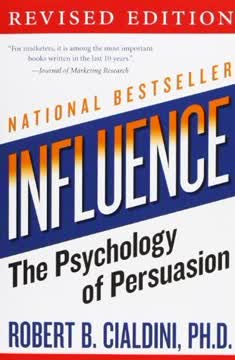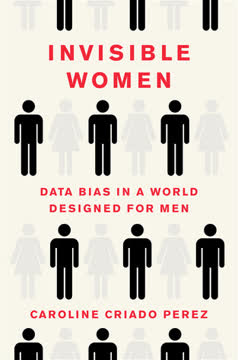Key Takeaways
1. Modern prestige brands, or "Ueber-Brands," balance exclusivity with accessibility
Where mega shouts power, meta means perspective.
Ueber-Brands redefine prestige. They are not just about high prices or limited availability, but about creating a sense of aspiration and cultural significance. These brands balance:
- Exclusivity: Creating a sense of scarcity and desirability
- Accessibility: Allowing broader reach without diluting brand value
Ueber-Brands achieve this balance through:
- Careful targeting of influencers and early adopters
- Controlled distribution and limited editions
- Strategic use of digital platforms for reach without overexposure
- Creating a sense of community and insider knowledge
Examples include Tesla, which targets eco-conscious luxury consumers while working towards mass-market electric vehicles, and Nespresso, which offers premium coffee experiences accessible to a wide audience through its club model.
2. A compelling mission and myth are essential for Ueber-Brand success
Ueber-Brands can only fulfil their mission if they have a mission.
Mission drives brand identity. Successful Ueber-Brands are built on a clear, compelling mission that goes beyond profit. This mission:
- Gives the brand purpose and direction
- Inspires customers and employees
- Differentiates the brand from competitors
There are two main approaches to developing a mission:
- Noblesse Oblige: Focusing on social, environmental, or ethical responsibilities
- Reinvention: Redefining a category or setting new standards
Examples include Patagonia's commitment to environmental sustainability and TOMS' "One for One" giving model. These missions create a sense of purpose that resonates with consumers and justifies premium pricing.
3. "Un-selling" is more effective than traditional marketing for Ueber-Brands
The best way to sell is often not to sell.
Subtle seduction trumps hard selling. Ueber-Brands avoid traditional advertising and instead focus on:
- Creating intrigue and mystery around the brand
- Using art and culture to elevate brand perception
- Letting the product speak for itself
Strategies for "un-selling" include:
- Collaborations with artists and cultural institutions
- Creating branded content and experiences
- Minimalist product presentations that emphasize quality and craftsmanship
Aēsop, for example, eschews traditional advertising in favor of store designs that reflect local culture and history. This approach creates a sense of discovery and appreciation among customers.
4. Ueber-Brands create deep meaning through storytelling and mythmaking
A compelling narrative fosters an illusion of inevitability.
Stories create emotional connections. Ueber-Brands use storytelling and mythmaking to:
- Give products and experiences deeper meaning
- Create a sense of heritage and timelessness
- Inspire customer loyalty and advocacy
Effective brand myths:
- Connect to universal human themes and values
- Incorporate elements of struggle and triumph
- Blend fact and fiction to create a compelling narrative
La Mer, for example, built its brand around the story of its founder's quest to heal his own skin, incorporating elements of science and miracle to create a powerful origin myth for its products.
5. Products should be manifestations of the brand's essence and myth
The product as essence.
Product as brand embodiment. Ueber-Brands ensure their products are physical manifestations of their brand story and values by:
- Incorporating unique design elements that reflect brand identity
- Using high-quality materials and craftsmanship
- Creating rituals and experiences around product use
Strategies for product elevation include:
- Developing a distinctive design language
- Offering customization and personalization
- Creating limited editions and collaborations
Hermès, for instance, maintains its reputation for quality and craftsmanship through meticulous attention to detail in every product, from its iconic Birkin bags to its silk scarves.
6. Ueber-Brands must live their dream authentically, inside and out
Nothing is as volatile as a dream.
Authenticity is crucial. Ueber-Brands must embody their mission and values in every aspect of their operations, including:
- Organizational culture and employee practices
- Supply chain and production methods
- Customer experiences and interactions
Key elements of living the brand dream:
- Strong, visionary leadership
- Consistent brand expression across all touchpoints
- Transparency and integrity in business practices
Brunello Cucinelli, for example, has built his brand around the concept of "humanistic capitalism," creating a work environment and production process that reflects his values of craftsmanship and human dignity.
7. Sustainable growth requires balancing expansion with brand integrity
Star power – it's a matter of balance.
Growth without compromise. Ueber-Brands must find ways to grow their business while maintaining their prestige and allure. Strategies include:
- Expanding into adjacent categories or markets
- Creating tiered product lines or sub-brands
- Leveraging digital platforms for reach without overexposure
Balancing growth and integrity:
- Maintain focus on core products and values
- Carefully manage distribution and accessibility
- Continuously innovate while respecting brand heritage
Hermès demonstrates this balance by expanding its product range and global presence while maintaining strict control over production and distribution to preserve its exclusivity and craftsmanship reputation.
Last updated:
FAQ
1. What is "Rethinking Prestige Branding: Secrets of the Ueber-Brands" by Wolfgang Schaefer about?
- Modern prestige branding: The book explores how prestige brands operate in today’s world, focusing on the evolution of luxury and premium branding in the digital age.
- Introduction of Ueber-Brands: It introduces the concept of "Ueber-Brands," which are brands that transcend traditional prestige by combining mission, myth, exclusivity, inclusivity, and authenticity.
- Seven principles framework: The book presents a framework of seven principles that define and guide the creation and management of modern prestige brands.
- Cultural and economic context: It situates these ideas within broader socio-economic and technological shifts, such as the rise of transparency, digital connectivity, and changing consumer values.
2. Why should I read "Rethinking Prestige Branding" by Wolfgang Schaefer?
- Understanding evolving prestige: The book provides crucial insights into how prestige branding has changed, helping marketers and brand managers adapt to new consumer expectations.
- Actionable guidance: It offers practical advice and real-world case studies from iconic brands like Hermès, MINI, Patagonia, and Apple.
- Navigating complexity: Readers learn how to balance exclusivity with accessibility, manage growth, and maintain authenticity in a skeptical, transparent market.
- Inspiration for innovation: The book encourages a rethinking of traditional strategies, embracing paradoxes and new approaches to brand building.
3. What are the key takeaways from "Rethinking Prestige Branding" by Wolfgang Schaefer?
- Ueber-Brand concept: Prestige brands must go beyond traditional luxury, building deep emotional connections and myths around their products.
- Seven principles: The book’s seven principles provide a roadmap for creating and sustaining modern prestige brands.
- Storytelling and mythmaking: Crafting compelling narratives and myths is essential for elevating brands above mere commodities.
- Balanced growth: Ueber-Brands must manage growth carefully to maintain their allure, exclusivity, and cultural significance.
4. What are Ueber-Brands according to Wolfgang Schaefer, and how do they differ from traditional prestige brands?
- Definition of Ueber-Brands: Ueber-Brands are modern prestige brands that combine mission, myth, exclusivity, inclusivity, and truth in unique ways, going "above and beyond" traditional luxury.
- Three key dimensions: They excel in having a compelling mission and myth, balancing connection and exclusion, and committing to authenticity.
- Not limited by size or category: Ueber-Brands can be startups or established houses, existing across various categories and price points.
- Examples: Brands like Apple, Patagonia, Red Bull, and Hermès exemplify Ueber-Brands by leading with purpose, storytelling, and innovative marketing.
5. What are the seven principles of Ueber-Branding in "Rethinking Prestige Branding" by Wolfgang Schaefer?
- Mission Incomparable: Brands must have a unique, inspiring mission that sets them apart.
- Longing vs. Belonging: They balance exclusivity and inclusivity, creating desire while fostering community.
- Un-selling: Ueber-Brands seduce rather than sell, using pride, provocation, and authentic communication.
- From Myth to Meaning: Storytelling and mythmaking are central, providing deep emotional and cultural resonance.
- Behold!: The product must embody the brand’s myth and essence, being unmistakable and central to the experience.
- Living the Dream: Brands must authentically live their mission, both internally and externally.
- Growth Without End: They grow thoughtfully, balancing expansion with maintaining prestige and exclusivity.
6. How does Wolfgang Schaefer define and explain the power of storytelling and myths in Ueber-Branding?
- Stories increase value: Storytelling can dramatically increase perceived value, as shown by experiments where mundane objects sold for much more when given compelling stories.
- Myths as public dreams: Myths are "public dreams" that connect brands to higher truths, providing meaning and aspiration beyond the product.
- Functions of myth: Drawing on Joseph Campbell, myths serve metaphysical, cosmological, sociological, and pedagogical functions for brands.
- Brand examples: Brands like Chanel and Harley Davidson use mythmaking to inspire loyalty and cultural resonance.
7. What is the "Mission Incomparable" principle in "Rethinking Prestige Branding" by Wolfgang Schaefer?
- Core of modern prestige: The mission is the brand’s raison d’être, providing a unique ideal that guides all actions and inspires followers.
- Purpose over product: Ueber-Brands focus on what consumers buy into (the mission), not just what they buy (the product).
- Two routes to mission: Brands can pursue "Noblesse Oblige" (social/ecological responsibility) or "Reinvention" (redefining categories).
- Daring and distinct: Brands must be bold, willing to alienate some to attract true believers.
8. How do Ueber-Brands balance exclusivity and inclusivity through the "Longing vs. Belonging" or "Velvet Rope" strategy?
- Velvet rope metaphor: Brands create barriers that make consumers desire access while fostering a sense of belonging among insiders.
- Two strategies: "Reaching high to win up" targets tastemakers first, while "Laying low to stay up" controls availability and rarity.
- Modern application: Ueber-Brands use ambiguity, unpredictability, and insider knowledge to maintain allure.
- Community building: Digital platforms help create multi-level communities, balancing who belongs and who longs.
9. What does "Un-selling" mean in the context of Ueber-Branding, according to Wolfgang Schaefer?
- Seduction over selling: Ueber-Brands attract consumers through pride, provocation, and mystery, avoiding overt sales tactics.
- Four ways to un-sell: They balance pride and provocation, create intrigue, embrace art and cultural collaborations, and live their values authentically.
- Celebrity endorsements inverted: Celebrities are shown as fans or humble users, elevating the brand above the individual.
- Content as medium: Brands create engaging content and experiences that draw consumers in without appearing pushy.
10. How do Ueber-Brands treat their products as the essence of their myth, according to "Rethinking Prestige Branding"?
- Product as essence: Products are manifestations of the brand’s myth, deserving reverence and central to the brand experience.
- Stories to Believe (STB): Brands turn functional benefits into romanticized stories that emotionally engage consumers.
- Rituals and design: Rituals and unmistakable design elevate product use into sacred, memorable experiences.
- Continuous evolution: Iconic products are subtly updated to maintain timeless appeal without losing their core essence.
11. What leadership and organizational structures support Ueber-Brands, as described by Wolfgang Schaefer?
- Dream team leadership: Ueber-Brands often have a duo of leaders—a creative visionary and a commercial operator—to balance imagination and execution.
- Protective mentorship: High-level mentors or sponsors within parent companies help protect the brand’s unique culture and mission.
- Ring-fencing: Semi-autonomous structures or incubators are used to preserve authenticity and prevent dilution by corporate pressures.
- Culture-driven organization: The brand’s mission permeates company culture, aligning employees and processes with the brand’s values.
12. How do Ueber-Brands manage growth without losing prestige, according to "Rethinking Prestige Branding"?
- Balanced growth: Ueber-Brands balance profit and rarity, accessibility and exclusivity, and expansion and sustainability to maintain desirability.
- Exponential growth trajectory: They often grow slowly at first, building roots and authenticity before expanding rapidly.
- Multiple growth strategies: Growth can be achieved by pruning, expanding sideways or upmarket, and staying close to core audiences.
- Leveraging digital stealth: The web allows brands to expand reach without physical overexposure, maintaining exclusivity while growing sales.
Review Summary
Rethinking Prestige Branding receives mostly positive reviews, with readers praising its insightful analysis of luxury brand strategies. The book explores how top brands create desire and loyalty through storytelling, authenticity, and mission-driven marketing. Some readers found the beginning slow but appreciated the practical examples and case studies. Critics noted a lack of diversity in examples and occasional dryness. Overall, readers recommend it for marketing professionals and those interested in brand building, despite some finding it dense or challenging to read through.
Similar Books







Download PDF
Download EPUB
.epub digital book format is ideal for reading ebooks on phones, tablets, and e-readers.




